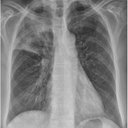Combined effects of toxic Microcystis aeruginosa and hypoxia on the digestive enzyme activities of the triangle sail mussel Hyriopsis cumingii.
キーワード
概要
Nowadays, eutrophication is a very popular environmental problem in numerous waters around the world. The main reason of eutrophication is the enrichment of the nutrient, which results in the excessive growth of phytoplankton and some of them are toxic and harmful. Fortunately, some studies have shown that some bivalves can filter the overgrown phytoplankton in water, which may alleviate water eutrophication. However, the physiological effects of toxic cyanobacteria on filter feeding animal have not been clarified very well. In this experiment, digestive enzyme activities in Hyriopsis cumingii exposed to different concentrations of the toxic Microcystis aeruginosa (0, 5 * 105 and 5 *106 cell ml-1) at two dissolved oxygen (DO) levels (6 and 2 mg l-1) for 14 days were investigated. Toxic M. aeruginosa significantly affected all digestive enzyme activities throughout the experiment. At high toxic M. aeruginosa concentration, the activities of cellulase, amylase and lipase in digestive gland and stomach were significantly increased (P<0.05). However, hypoxia reduced the activities of cellulase, amylase and lipase in digestive gland and stomach. Conflicting effects were observed between toxic M. aeruginosa and DO in most digestive enzyme activities during the exposure period. Therefore, it is not conducive for the digestion and absorption of M. aeruginosa in H. cumingii under hypoxic conditions. H. cumingii is tolerant to toxic M. aeruginosa and may remove toxic cyanobacteria from waters under normal DO conditions.


